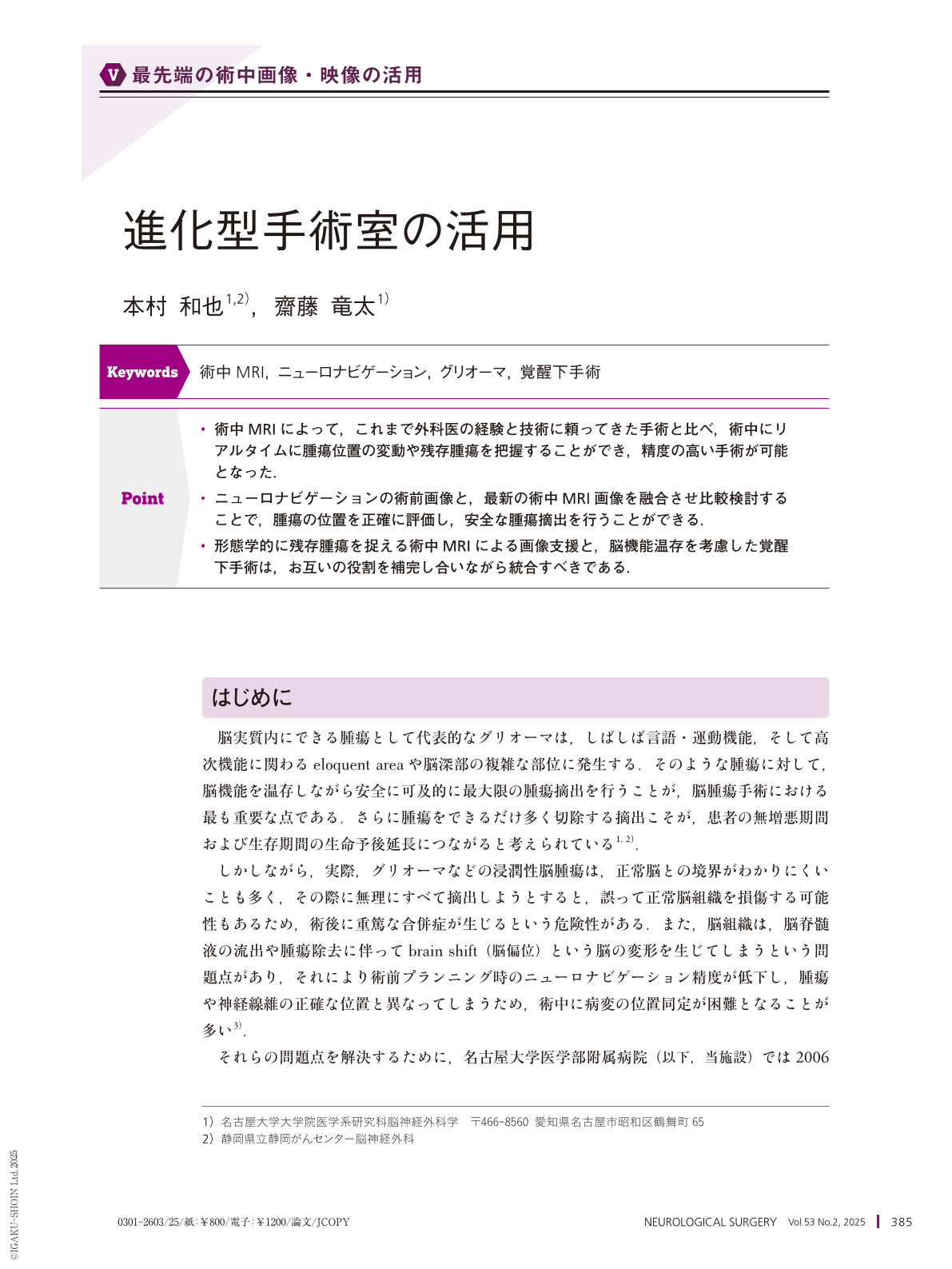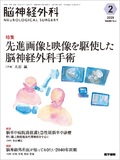Japanese
English
- 有料閲覧
- Abstract 文献概要
- 1ページ目 Look Inside
- 参考文献 Reference
Point
・術中MRIによって,これまで外科医の経験と技術に頼ってきた手術と比べ,術中にリアルタイムに腫瘍位置の変動や残存腫瘍を把握することができ,精度の高い手術が可能となった.
・ニューロナビゲーションの術前画像と,最新の術中MRI画像を融合させ比較検討することで,腫瘍の位置を正確に評価し,安全な腫瘍摘出を行うことができる.
・形態学的に残存腫瘍を捉える術中MRIによる画像支援と,脳機能温存を考慮した覚醒下手術は,お互いの役割を補完し合いながら統合すべきである.
Brain parenchyma tumors, typically gliomas, often arise in eloquent areas and complex regions deep within the brain that are involved in language, motor, and higher cognitive functions. Brain tumor surgery aims to safely remove as much of the tumor as possible while preserving brain function. However, invasive brain tumors, such as gliomas, are often difficult to distinguish from the normal brain, and removal of the entire tumor may inadvertently damage the normal brain tissue, resulting in the risk of serious postoperative complications. Additionally, brain tissue is subject to brain deformation, called brain shift, because of cerebrospinal fluid drainage and tumor removal. This reduces the accuracy of neuronavigation during preoperative planning, resulting in differences in the exact locations of the tumor and nerve fibers. Intraoperative magnetic resonance imaging (MRI) enabled to identify the exact tumor position and residual tumor in real-time perioperatively, compared to surgery that relies on the surgeon's experience and skill, enabling highly accurate surgery. Moreover, the fusion and comparison of preoperative images and latest intraoperative MRI images enable the accurate evaluation of tumor location and safe tumor removal. Intraoperative MRI imaging-assisted techniques that can capture residual tumor morphology and awake surgery that preserves brain function should be integrated to complement each other's roles.

Copyright © 2025, Igaku-Shoin Ltd. All rights reserved.


